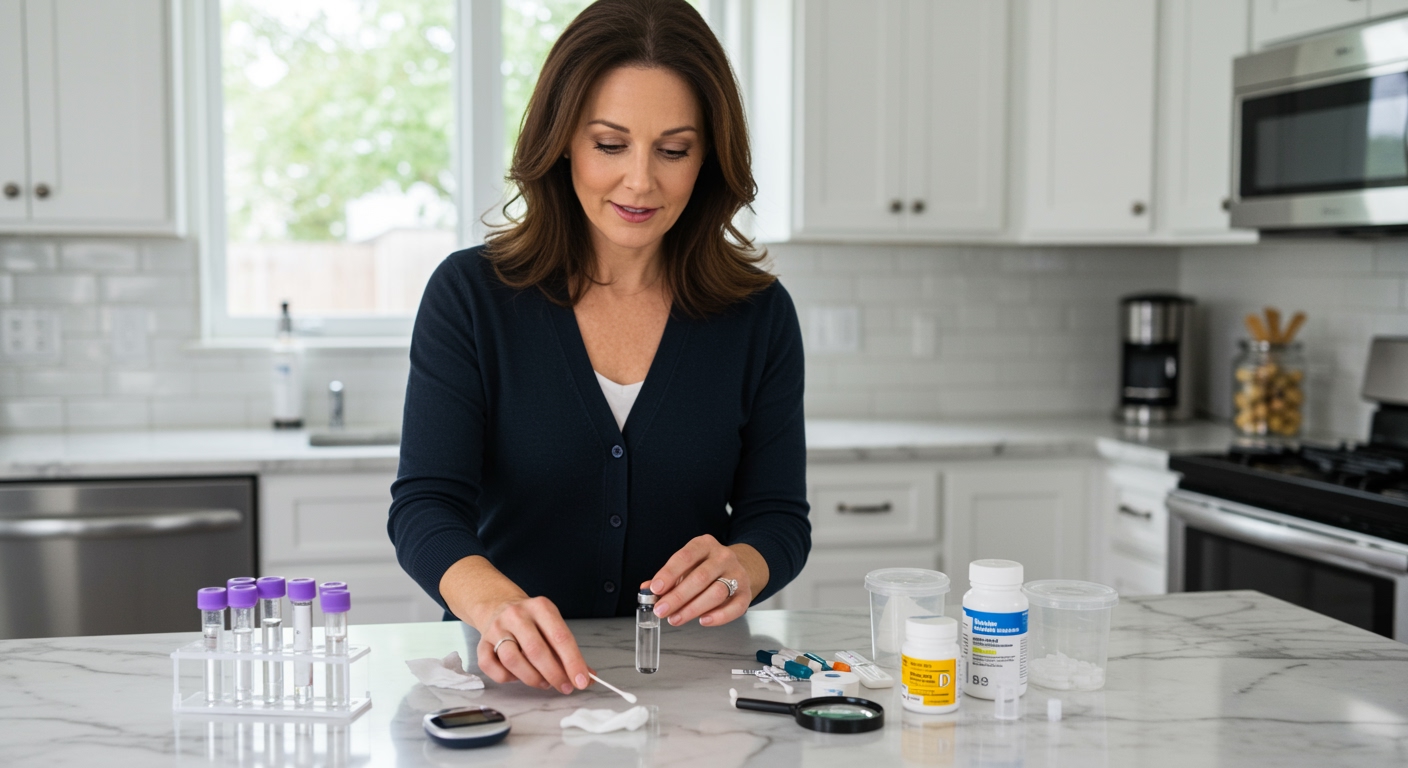✪ Key Highlight: Scientists discover tears mirror blood glucose levels while saliva reflects vitamin D status, potentially ending painful testing.
Introduction
Millions of people with diabetes prick their fingers multiple times daily to check blood sugar levels.
Now scientists have discovered that tears can closely match blood glucose levels and saliva might reflect vitamin D status, opening doors to painless health monitoring for chronic disease patients.
Hi, I’m Abdur, your nutrition coach and today I’m going to analyze this groundbreaking research that could revolutionize how we monitor diabetes and vitamin D deficiency.
How Do Tears Replace Blood Glucose Testing?
The recent study published in Physiologia examined whether tears could accurately reflect blood glucose levels in people with type 2 diabetes.
Researchers found that glucose concentrations in tears strongly mirror those found in blood samples.
This discovery means people with diabetes might soon avoid painful finger pricks by simply collecting a tear drop instead.
The glucose in tears comes from the same source as blood glucose, making it a reliable indicator of blood sugar levels.
Current blood glucose testing requires breaking the skin barrier, which can be painful and create infection risks over time.
Tear-based testing would eliminate these concerns while providing continuous monitoring capabilities throughout the day.
✪ Fact: Tears contain glucose that directly correlates with blood glucose levels in diabetic patients.
Can Saliva Accurately Measure Vitamin D Status?
The same research team investigated whether saliva could replace blood tests for vitamin D monitoring.
Vitamin D is a fat-soluble nutrient that comes in two main forms, D2 and D3, which we obtain from food or produce in our skin when exposed to sunlight.
This nutrient plays crucial roles in calcium absorption, bone strength, and immune system support.
Low vitamin D levels are linked to heart disease, autoimmune disorders, diabetes, metabolic syndrome, and infections.
The researchers discovered that vitamin D levels in saliva provide a useful snapshot of a person’s overall vitamin D status.
This finding could make vitamin D testing much simpler, especially for people who dislike needles or need frequent monitoring.
Saliva testing could help catch vitamin D deficiencies earlier and allow for quicker treatment interventions.
✪ Pro Tip: Regular vitamin D monitoring becomes easier when you can simply provide a saliva sample instead of blood.
What Makes This Testing Method Revolutionary?
Dr. Jonathan Little from the University of British Columbia Okanagan explained that detecting hyperinsulinemia before blood glucose levels rise could identify people at risk for type 2 diabetes early.
This early detection allows for lifestyle changes and treatments to be introduced long before glucose levels become problematic.
Other research supports the idea that saliva can be a powerful tool for diabetes screening.
Studies show that a sugar called 1,5-anhydroglucitol (1,5-AHG) in saliva closely links to blood levels of the same sugar.
This marker can be used alongside fasting glucose or HbA1c tests to improve diabetes screening accuracy.
Saliva testing is not only less invasive but could also be done at home with portable devices in the future.
This would be especially helpful for children, older adults, and anyone who fears needles.
✪ Note: Home-based saliva and tear testing could revolutionize chronic disease management for millions of patients.
What Challenges Must Scientists Overcome?
Measuring important markers in saliva and tears is not as straightforward as using blood samples.
The levels of crucial sugars and nutrients are much lower in these fluids compared to blood.
This means more sensitive and accurate testing methods are needed to ensure reliable results.
Scientists are working on new types of tests, including enzymatic-based assays and special sensors.
These advanced testing methods must be both reliable and easy to use for widespread adoption.
The study in Physiologia was just a pilot study, meaning it was small and more research is needed.
Before saliva and tear testing can replace blood tests in clinics, they must be thoroughly tested for accuracy and reliability.
✪ Fact: Lower concentrations in saliva and tears require more sophisticated detection technology than blood tests.
The Bottom Line
This research opens exciting possibilities for painless health monitoring that could transform how we manage diabetes and vitamin D deficiency.
The future of health monitoring lies not in what we fear, but in what flows naturally from our bodies.
What questions do you have about these new testing methods, and would you prefer saliva or tear testing over traditional blood draws for your health monitoring needs?
References
At NutritionCrown, we use quality and credible sources to ensure our content is accurate and trustworthy. Below are the sources referenced in creating this article:





